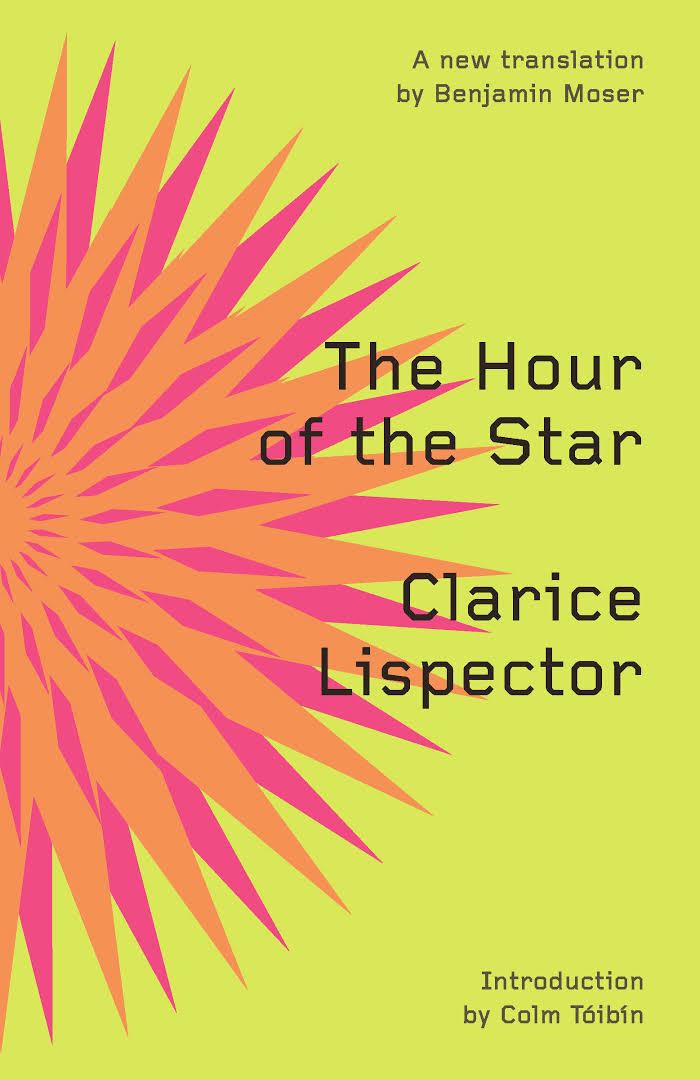8 /10 1 Votes8
Country Brazil Publisher José Olympio Editora Published in English 1992 and 2011 Originally published 1977 | 4/5 Goodreads Publication date 1977 Original title A Hora da Estrela Adaptations Hour of the Star (1985) | |||||||||||||||||||||||||||||||||
 | ||||||||||||||||||||||||||||||||||
Similar Near to the Wild Heart, The Passion Accordin, Family Ties, The stream of life, Un Soplo de Vida | ||||||||||||||||||||||||||||||||||
The hour of the star by clarice lispector careless classics
The Hour of the Star (A hora da estrela) is a novel by Clarice Lispector published in 1977, shortly after the author's death. In 1985, the novel was adapted by Suzana Amaral into a film of the same name, which won the Silver Bear for Best Actress in the 36th Berlin International Film Festival of 1986. It has been translated into English twice by New Directions Publishing with Giovanni Pontiero's 1992 translation followed by Benjamin Moser's version in 2011.
Contents
- The hour of the star by clarice lispector careless classics
- Themes
- Background and publication
- Reception
- References
Themes
The Hour of the Star deals with the problems of the rural Northeast versus the urban Southeast, poverty and the dream of a better life, and, of an uneducated woman’s struggle to survive in a sexist society. In February 1977, Lispector gave her only televised interview, with Júlio Lerner of TV Cultura in São Paulo. In it, she mentioned a book she had just completed with “thirteen names, thirteen titles,” though she refused to name them. According to her, the book is "the story of a girl who was so poor that all she ate was hot dogs. That’s not the story, though. The story is about a crushed innocence, about an anonymous misery."
Background and publication
Clarice used her own childhood in the Northeast region of Brazil as reference to build the protagonist Macabéa. She also mentioned a gathering of people from this region in the São Cristóvão neighborhood of Rio de Janeiro, where she first captured the "disoriented look" of the Northeasterns in the city. Clarice was also inspired by a fortune teller she visited, an event upon which she bases the final part of the plot. When she was leaving the fortune teller's house, she found it amusing to imagine herself being hit by a yellow Mercedes and dying immediately after hearing all the good projections the fortune teller foresaw for her future.
The novel was composed from short fragments that Lispector and her secretary, Olga Borelli, pieced together. Lispector was not aware that she was dying at the time she wrote it, though the work is full of premonitions of her upcoming death.
Reception
Peter Bricklebank in his review for Library Journal described the novel as "both introspection and fiction" and that it was a "compassionate meditation with a fine afterward, this slim volume will attract lovers of philosophical fiction". Barbara Mujica in her review for Americas described the novel as "the last and perhaps greatest novel of the Brazilian writer Clarice Lispector" and that "The Hour of the Star is also a meditation on writing. Through Rodrigo, Lispector brings into question the notion of authorial supremacy. Rodrigo is not the omnipotent, invisible creator, but a thinker who doubts, vacillates, and questions his own work. In The Hour of the Star and other novels, Lispector throws into doubt the ability of fiction to capture the truth."
